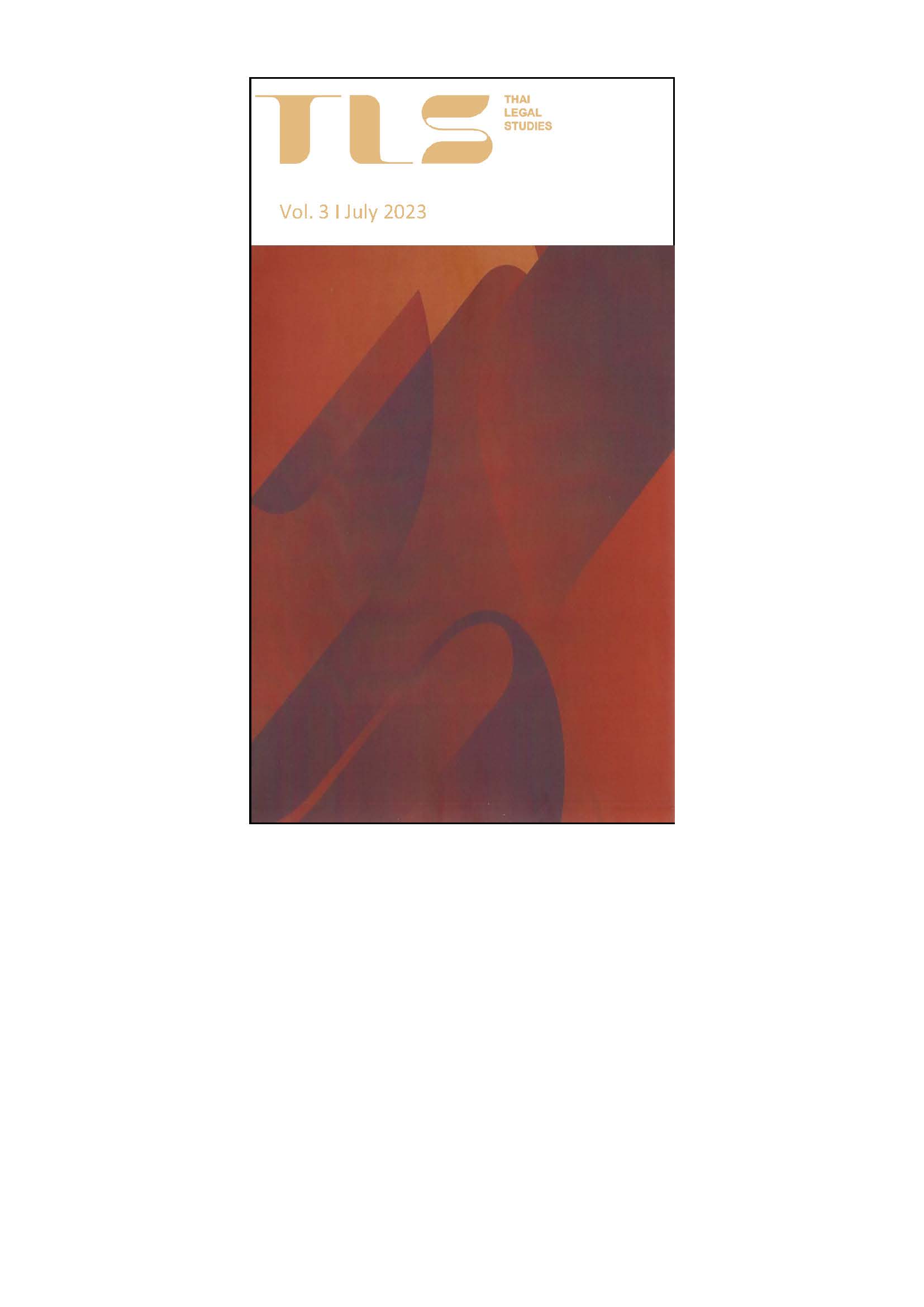The Arithmetic of Life in Premodern Siam: Ranking and Monetary Value in the Regime of Punishment
DOI:
https://doi.org/10.54157/tls.261959Keywords:
Ayutthaya, Three Seals Code , Phrommasak, Penal systems, FinesAbstract
Penal systems are a reflection of a society and its governance. The laws of pre-modern Siam, as collected in the Three Seals Code, included a law on punishment called Phrommasak. Although this text is applicable to only a narrow range of offences, it seems to have served as a reference point or model for punishment of other offences which today would be labelled as “civil.” The Phrommasak has three striking features: first, it prescribed punishments in the form of money paid as fines and compensation; second, these amounts were calculated to vary greatly according to social status as measured by sakdina; and third, the calculation of these amounts was highly intricate involving several arithmetic formulas, multiple dimensions, and Buddhist concepts. Although the prominent use of fines and the grading by social status can be traced to Indian sources, such as the Arthasastra, the scope and intricacy of the system in the Phrommasak appears to be unique. The Phrommasak reflects the nature of Ayutthaya Siam as a commercial or market society, conscious of its low population, where hierarchies on public display were important in structuring the society.
References
Baker, Chris, and Pasuk Phongpaichit. “The Child is the Betel Tray: Making Law and Love in Ayutthaya Siam.” (2021) Thai Legal Studies. https://doi.org/10.54157/tls.245734
Baker, Chris, and Pasuk Phongpaichit. A History of Ayutthaya: Siam in the Early Modern World (Cambridge University Press 2017). https://doi.org/10.1017/9781108120197
Doniger, Wendy, and Brian K. Smith. The Laws of Manu (Penguin Books 1991).
Hay, Douglas (ed). Albion's Fatal Tree: Crime and Society in Eighteenth-Century England (Allen Lane 1975). https://doi.org/10.11606/issn.2316-9141.v0i115p191-195
La Loubère, Simon de. A New Historical Relation of the Kingdom of Siam, trans. A. P. Gen (n.p., 1793).
La Loubère, Simon de. Du royaume de Siam (La Veuve de Jean-Baptiste Coignard et Jean-Baptiste Coignard 1691).
Lingat, R. L’Esclavage privé dans le vieux droit siamois (Les Éditions Domat-Montchrestien, F. Loviton et Cie 1931).
O’Kane, John. The Ship of Sulaiman (Columbia University Press 1972). https://doi.org/10.4324/9780203706794
Olivelle, Patrick. Manu’s Code of Law: A Critical Edition and Translation of the Mānava-Dharmásāstra (Oxford University Press 2005). https://doi.org/10.1093/oso/9780195171464.001.0001
Rothman, David, and Norval Morris (eds). The Oxford History of the Prison: The Practice of Punishment in Western Society (Oxford University Press 1995).
Roy, Roopanjali (tr). The Memoirs and Memorials of Jacques de Coutre: Security, Trade and Society in 16th-Century Southeast Asia (Peter Borschberg, ed, NUS Press 2014). https://doi.org/10.2307/j.ctv1ntgmp
Vickery, Michael. “The Constitution of Ayutthaya: An Investigation into the Three Seals Code.” In A. Huxley (ed), Thai Law: Buddhist Law. Essays on the Legal History of Thailand, Laos and Burma (White Orchid 1996).
Yang, Bin. Cowrie Shells and Cowrie Money: A Global History (Routledge 2019). https://doi.org/10.4324/9780429489587
Sources in Thai
กฎหมายตราสามดวง ฉบับราชบัณทิตยสถาน เล่ม ๒ (ราชบัณทิตยสถาน 2550). [Three Seals Law Royal Society Edition vol 2 (Royal Society 2007).]
พระราชพงศาวดารกรุงศรีอยุธยา ฉบับพันจันทนุมาศ (สำนักพิมพ์ศรีปัญญา 2553). [Royal Chronicles of Ayutthaya, Phan Chanthanumat Edition (Sipanya 2010).]
พระไอยการพรมศักดิ. กฎหมายตราสามดวง เล่ม 2 (องค์การค้าของคุรุสภา 2537). [Phra Aiyakan Phrommasak. Code of Punishment, Three Seals Law vol 2 (Khurusapha 1994).]
ศิริพร ดาบเพชร. “ค่าของคน และ บทปรับ ในกฎหมายตราสามดวง.” (2548) วารสารประวัติศาสตร์ . [Siriporn Dapphet. “Body-price and Fining in the Three Seals Law.” (2005) Warasan Prawatisat.] http://ejournals.swu.ac.th/index.php/JOH/article/view/1281/1290
Downloads
Published
Issue
Section
License
Copyright (c) 2023 Chris Baker, Pasuk Phongpaichit

This work is licensed under a Creative Commons Attribution 4.0 International License.
Authors retain copyright and publishing rights without restrictions, but grant Thai Legal Studies the right of first publication in English and to distribute the work under a Creative Commons Attribution 4.0 International Public License (“CC BY 4.0”). It allows others to freely share the work, including the making of translations. There is no charge or fee for readers to immediately view published articles or content, and users are allowed to read, download, copy, distribute, print, search, link to the full texts of the articles, or use them for any other lawful purpose, without asking prior permission from Thai Legal Studies or the author(s), the only requirement being that an acknowledgement is given of the work’s authorship and its initial publication in English by Thai Legal Studies.







